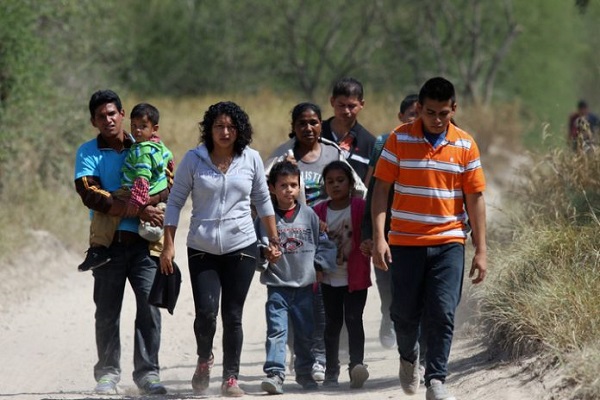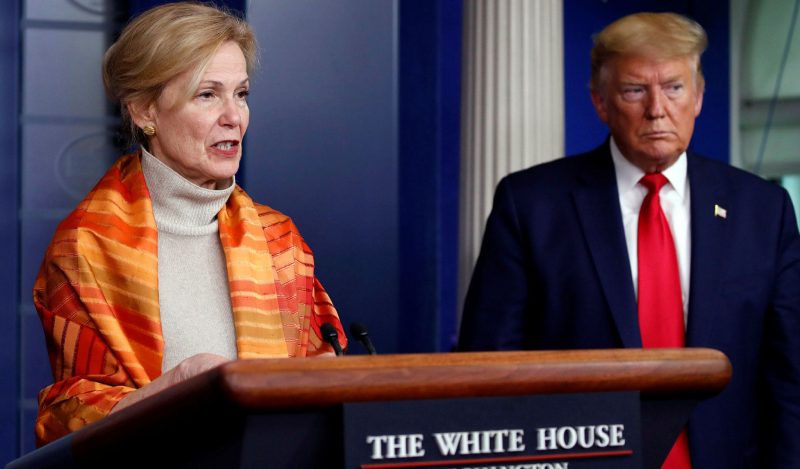illegal immigration
Biden Announces Widespread Amnesty Plan for Illegal Immigrants

From Heartland Daily News
President Joe Biden announced a new plan on Tuesday that will fast track a path to citizenship for hundreds of thousands of foreign nationals who’ve been living in the country illegally for more than 10 years and married a U.S. citizen. He also expanded protections for DACA recipients, according to several reports.
In a statement issued by the White House, the president blamed Republicans in Congress for not securing the border and fixing the “broken immigration system.”
Because of Republicans putting “partisan politics ahead of national security,” he announced additional measures to implement deportation protections to some illegal foreign nationals. Doing so reflects his commitment to “expanding lawful pathways and keeping families together,” he said, arguing that those who entered the country illegally “who have been in the United States for decades, paying taxes and contributing to their communities, are part of the social fabric of our country.”
His new action will help “people who have been here many years to keep American families together and allow more young people to contribute to our economy,” according to the statement.
The Wall Street Journal first reported that the plan zeroes “in on the population of mixed-status families, where typically the children and one parent are U.S. citizens, because they believe that demographic is the most compelling, according to administration officials and advocates who have spoken with them.”
One way to do this would be to implement another parole policy called “parole in place,” enabling illegal foreign national spouses of U.S. citizens to obtain green cards and U.S. citizenship. They would also receive work permits and deportation protections, according to several reports on Monday.
In order to be eligible for the new parole program, noncitizens, as of June 17, 2024, must have resided in the U.S. for 10 or more years and be legally married to a U.S. citizen. On average, those who are eligible have resided in the U.S. for 23 years, according to the White House statement released Tuesday.
Advocates in support of providing amnesty estimate there are more than one million spouses who could apply to the new parole program, the Journal reported.
The announcement at the White House came on the 12th-year anniversary of former President Barack Obama creating by executive order the Deferred Action for Childhood Arrivals program (DACA). DACA shielded children from deportation who were brought into the country illegally by their parents and has been in litigation for 12 years. A federal judge has twice ruled that the program is illegal. The most recent ruling was in a multi-state lawsuit led by Texas to end DACA once and for all, The Center Square reported. The case is expected to ultimately be decided by the U.S. Supreme Court.
Biden announced an expanded program for DACA recipients to “streamline the process” for them “and other undocumented immigrants to request waivers that would make it easier for them to obtain temporary visas, such as H-1B visas for high-skilled workers,” CBS News reported.
DACA recipients who earned a degree at an accredited U.S. institution of higher education and who received an offer of employment from a U.S. employer in a field related to their degree will be able to quickly receive work visas, according to the White House statement.
Numerous reports suggest between 700,000 and 800,000 people living in the U.S. are DACA recipients. The Los Angeles Times reports there are 578,680 DACA recipients on record with the U.S. Citizenship and Immigration Services as of March 2023.
After announcing earlier this month he was limiting asylum claims, the president is now proposing a measure to ensure those in the country illegally aren’t deported. Both announcements made five months before the election aren’t solutions but political ploys and will only incentivize illegal immigration, critics argue.
“It is definitely an incentive and will drive more illegal immigration,” former acting director of Immigration and Customs Enforcement Tom Homan told The Center Square. “In a time where we are facing historic numbers on the southern border, President Biden announces yet another giveaway program, another reward for illegally entering this country.
“This reinforces that you can enter this country illegally and if you can hide out long enough, you get legal status. This will drive more illegal immigration and they know that and that is why they are doing it.”
If the president really cared about border security and reforming immigration law, he would “reimplement the Migrant Protection Protocols; … restore Asylum Cooperative Agreements with Central American partners; finish construction of new border wall system that Congress funded years ago [which he halted]; and … end mass catch-and-release,” U.S. House Committee on Homeland Security Chairman Mark Green, R-TN, said in a statement. The president “could stop the flow of hundreds of thousands entering this country via unlawful mass-parole programs created by his DHS secretary. And he could encourage Senate Democrats to pass H.R. 2, the only border bill passed by either house of the 118th Congress, to further close loopholes and end avenues for exploitation of our borders by the cartels.
“But he won’t, because the rabidly anti-enforcement, open-borders left is calling the shots for the Biden administration. And the rest of us are paying the price.”
Any executive actions taken related to newly created parole programs or DACA are likely to be challenged by Republican attorneys general.
Originally published by The Center Square. Republished with permission.
illegal immigration
Feds can’t find foreign nationals released into US as terrorism threats heightened

Concertina wire is installed along the banks of the Rio Grande River as part of “Operation Lone Star,” Texas Gov. Greg Abbott’s border security mission.
From The Center Square
By
Nine months after the U.S. Department of Homeland Security Office of Inspector General expressed alarm that under the Biden administration, DHS agencies couldn’t locate where illegal foreign nationals were after they released them into the U.S., ongoing problems persist and terrorism threats are heightened.
Last September, the DHS OIG released a redacted report stating that DHS “does not have assurance that all migrants can be located once they are released into the United States.”
It conducted an audit over a 17-month period when DHS released more than 1.3 million foreign nationals into the U.S. after they illegally entered through the southwest border.
Of the 981,671 Border Patrol records evaluated from March 2021 through August 2022, addresses for more than 177,000 foreign nationals, or nearly 20%, “were either missing, invalid for delivery, or not legitimate residential locations,” it found.
The OIG also found that during this period, Border Patrol agents released 430,000 illegal foreign nationals into the U.S. on their own recognizance with Notice to Appear documents to go before an immigration judge. They released nearly 95,000 with Notice to Report documents to go to an Immigration and Customs Enforcement (ICE) office and more than 318,000 through a new Parole Plus Alternatives to Detention (Parole + ATD) program.
Under the Biden administration, instead of being processed for removal, foreign nationals deemed inadmissible were granted Parole + ATD and released into the U.S. They were also tracked with electronic devices either through wearing ankle bracelets or being given smartphones “intended to ensure compliance with release conditions, court hearings, and final orders of removal,” the report notes.
Prior to releasing them, federal agents are required to vet them to ensure they don’t have a criminal record and aren’t connected to countries of foreign concern or terrorist organizations. Federal agents are also required to obtain an address of where they are going in order to enforce federal immigration law.
The OIG found that DHS agencies had “limited ability” to accurately and effectively track them. Border Patrol “cannot always obtain and does not always record migrant addresses” and ICE “does not always validate migrant addresses prior to their release.”
Border Patrol agents didn’t accurately and effectively capture valid addresses, the report notes, because they were inundated with large influxes of people arriving at the border and because of “limited coordination with ICE and its limited authority to administer compliance with address requirements.” The audit found that “ICE also did not have adequate resources to validate and analyze migrants’ post-release addresses.”
ICE is statutorily required to enforce federal immigration law, specifically detaining and removing inadmissibles. “ICE must be able to locate migrants to enforce immigration laws, including to arrest or remove individuals who are considered potential threats to national security,” the OIG said. “The notable percentage of missing, invalid for delivery, or duplicate addresses on file means DHS may not be able to locate migrants following their release into the United States. As the Department continues to apprehend and release tens of thousands of migrants each month, valid post-release addresses are essential.”
Prior to this audit, the OIG found that DHS processes allowed known or suspected terrorist to illegally enter the U.S. and “potentially threaten national security and public safety.”
The report was released nearly 22 years after the 9/11 terrorist attacks. The terrorist attacks prompted the creation of DHS, consolidating several federal agencies all mandated to protect Americans and prevent another terrorist attack from occurring.
Within the last nine months, the OIG continued to report on DHS failures and authorities nationwide have issued heightened terrorist warnings.
One OIG audit found that U.S. Customs and Border Protection (CBP) and U.S. Citizenship and Immigration Services (USCIS) weren’t effectively screening asylum seekers – meaning they didn’t know who they were releasing into the country.
Another OIG report found that CBP and ICE weren’t detaining and removing inadmissables arriving at a major international airport – with 44% flagged for removal not showing up for their removal flights because federal agents had released them.
Another OIG audit found that DHS, CBP, USCIS and ICE agents didn’t properly vet or resolve derogatory information for tens of thousands of Afghans released into the U.S. After the Biden administration pulled U.S. forces out of Afghanistan in August 2021, 97,000 Afghans were brought to the U.S. Among them, 77,000, or 79%, were granted humanitarian parole into the U.S. allowing them to stay for two years.
The OIG expressed alarm about DHS not having a process “for monitoring parole expiration” after the two-year period ended in August 2023, meaning no plans were in place to remove them.
As numerous officials have warned a terrorist attack on U.S. soil is imminent and members of Congress have demanded answers, an unprecedented estimated 12 million people from over 150 countries have illegally entered the U.S. since the president has been in office.
espionage
After Suspected Tajik Terrorist Arrests,Little-Known Biden Border Entry Program Demands Hard Focus

From Todd Bensman as published June 20, 2024 in The Daily Wire
The ‘CBP One’ phone app entry scheme has brought in 888 other Tajiks, plus thousands more, from nations of terrorism concern
A multi-state FBI counterterrorism wiretap sting has rolled up eight Tajikistani nationals in three cities who had entered over the U.S. Southwest Border and were plotting some sort of bombing.
On its own, what little is known about this terrible new consequence of President Joe Biden’s ongoing historic mass migration border crisis – a coordinated, large-cell infiltration attack on the homeland – ranked as startling enough to draw congressional demands for much more basic information than the administration will currently release.
“Unfortunately, the unacceptable security failures that have allowed individuals with terrorist ties to enter the United States through the Southwest Border have become an alarming pattern under the administration,” states a recent U.S. House Homeland Security Committee letter demanding the Biden administration disclose how it failed here.
Not yet demanded, however, is attention to a recent revelation about the Tajik Eight case that should propel what is happening at the border to an even higher and broader level of national security concern. NBC News has reported that the Department of Homeland Security (DHS), of all agencies, actually vetted and pre-approved the entry of at least one of the busted Tajikistanis on the administration’s “CBP One” phone app — a humanitarian parole scheme.
The CBP One phone app-based entry program has allowed more than 500,000 foreign nationals from 100 different countries who intended to illegally cross the border to instead schedule a DHS-approved “legal” escort through eight U.S.-Mexico land ports, according to information exclusively obtained and reported by the Center for Immigration Studies through Freedom of Information Act litigation over the past year.
The Biden administration began piloting the program in May 2021 but dramatically expanded it in January 2023, it said, as a means to clear politically damaging illegal entry border congestion.
Almost all 500,000, we are assured, were supposedly well vetted for security, then granted quick release into the United States, sight unseen, on two-year, renewable permits that also come with work authorization eligibility.
But the NBC revelation that one or more of the arrested Tajiks used the CBP One land ports entry scheme warrants new scrutiny about that land port pipeline into the country. It poses a unique national security risk, quite separate from traditional illegal border crossings, especially the vetting that is supposedly done byDHS before passage is granted.
In this case, the vetting obviously didn’t work.. But for how many others did the vetting system not work? The odds do not look promising.
It turns out that DHS personnel have approved not one or two problematic Tajiks of malintent for passage, but hundreds from that Muslim-majority country of U.S. terrorism concern over the past couple of years – and literally thousands from some two dozen other nations of terrorism concern, according to an analysis of the center’s FOIA lawsuit data on this program.
From its May 2021 inception through at least December 2023, DHS approved 888 Tajiks for land port passage and release into the country on the two-year humanitarian parole releases, no doubt many more during the first half of 2024.
And they are the least of a rich diversity of foreign nationals from two dozen nations of terrorism concern that the administration has wittingly allowed through the pipeline.
Thousands More Approved For Entry
The historical context as a homeland security matter for these entries is important to know. To reduce the risk of terrorist border infiltration a few years after 9/11, the U.S. homeland security enterprise began tagging those arriving from some 35-40 nations where Islamic terrorist groups operate as “special interest aliens,” or SIAs, which flagged them for detention and additional security vetting. The Biden administration now uses the term “special interest migrants” internally.
SIAs are not regarded as terrorists but, because they arrive from nations where avowed anti-U.S. terrorist groups are prevalent, homeland security protocols dating back to a 2004 CBP Memorandum required extra security procedures for those coming from the designated list of countries. Tajikistan has been on that list from the beginning.

U.S. Customs and Border Protection. November 1, 2004.
In addition to the 888 Tajiks allowed in through the CBP One app program, DHS has authorized thousands more from 24 special interest countries to enter, including from Afghanistan (653), and smatterings from Iran (27), Lebanon (10), Syria (7), Iraq (4), Egypt (6), and Jordan (5). But the largest numbers of SIAs let in are coming from other Muslim-majority former Soviet republics in Central Asia neighboring Tajikistan, such as Kyrgyzstan (4,224 through December), Uzbekistan (2,071), and Kazakhstan (585).
The terrorism section of the CIA’s “World Factbook” notes that U.S.-designated foreign terrorist groups have long operated in the dangerous neighborhood that all three of the most numerous of the SIAs hail from: the Kyrgyz Republic, Uzbekistan, and Tajikistan. Afghanistan is in the same tough neighborhood.
Among the groups operating in those three countries are the Islamic Jihad Union, the Islamic Movement of Uzbekistan, and ISIS-Khorasan (ISIS-K). But there are many other extremist groups operating in the region too, such as the Islamic Renaissance Party of Tajikistan and various ISIS-affiliated groups the government has suppressed, according to the U.S. State Department’s 2021 Country Report on Terrorism for Tajikistan, and who might want to flee to the United States.
The same report notes that terrorist group members move throughout the mostly unguarded borders of these countries, with Tajikistan asserting that “thousands of militants” come and go from neighboring Afghanistan.
As one indication of public sentiment toward Islamic extremist ideology in the Kyrgyz Republic, an estimated 850 of its citizens reportedly joined ISIS between 2013 and 2015, and regional scholars insist the real number is higher, according to George Washington University’s Program on Extremism.
Uzbekistan also has figured prominently in global counterterrorism efforts, in part because the internationally designated terrorist organization known as the Islamic Movement of Uzbekistan has had regional and global reach and regularly conducts attacks. Extremists from Uzbekistan have been implicated in U.S. attacks and plots too. Hundreds of Uzbeks also fought for ISIS and many have returned.
At issue with the entry of one or more of the Tajik Eight, along with the thousands of other government-authorized entries of SIAs, is whether the Biden administration’s DHS is conducting effective enhanced security screening.
Failing Security Screening
DHS Secretary Alejandra Mayorkas has repeatedly assured the American public that security vetting for this program is its highlight.
DHS policy documents say all approved CBP One applicants pass “rigorous biometric and biographic national security and public safety screening and vetting.”
CBP agents and U.S. processors, however, mainly run this information through criminal and domestic national security databases looking for matches to U.S. criminal records, warrants, and terrorism watch lists, those who do this work say. A DHS source with direct knowledge of government vetting processes for the CBP One land port parole program, who was not authorized to speak or be identified, told me last fall that all of the SIAs going through the CBP One appointment and parole at the land ports are run through more databases than non-SIA applicants — these ones containing classified intelligence information — as a means to detect terrorism problems.
But this vetting process is deeply flawed, experts say, because of a presumption that only fractional few real terrorists ever make intelligence databases. Database checks can’t detect information that is not in them.
“The only thing we can query is information that we have,” former FBI Director James Comey once said of vetting foreign national refugees. “So, if we have no information on someone, they’ve never crossed our radar screen, they’ve never been a ripple in the pond, there will be no record of them there and so it will be challenging.”
Neither can U.S. intelligence agencies very well check for derogatory information with governments that are diplomatically hostile to the United States and would never cooperate, such as Iran, Syria, Yemen, and Afghanistan.
Pertinent Questions
“That’s a really hard target to analyze, and to just shoot from the hip and let them in is absolute insanity in my book,” said James G. Conway, a retired FBI counterterrorism agent who after 9/11 worked in Mexico trying to detect terrorists within the SIA flows. “How would you knowingly and wittingly bring people from terrorist countries into the United States with that level of vetting? Some of these terrorism countries don’t even have an electric grid let alone a computer system, and you can’t scrub them on databases that don’t exist. The whole thing is insane to me.
“What’s the motivation? I mean, why would they do that?” Conway added, referencing the Biden administration’s approval of SIAs for the CBP One entry program.
That’s a pertinent question that lawmakers, media pundits, and reporters might start asking before there’s blood in American streets.
-

 Environment2 days ago
Environment2 days agoWall Street’s planned theft of America’s lands and waters
-

 National2 days ago
National2 days agoBy-election Bombshell! Justin Trudeau’s Liberals lose safe Toronto riding
-

 COVID-192 days ago
COVID-192 days agoDr. McCullough’s powerful new documentary exposes systemic medical tyranny during COVID
-

 Central Alberta2 days ago
Central Alberta2 days agoRed Deer Games Foundation awards Spring Scholarships
-

 Energy2 days ago
Energy2 days agoHow climate activists harm Canadian energy security
-

 Business2 days ago
Business2 days agoCanadian Constitution Foundation in court this week intervening in “plastics ban” case
-

 Crime18 hours ago
Crime18 hours agoGUILTY; Home Grown ISIS Cell Convicted of First Degree Murder
-

 Energy2 days ago
Energy2 days agoBiden Admin Energy Policies Putting Americans Further At Risk In Potential War With China, Analysis Finds






